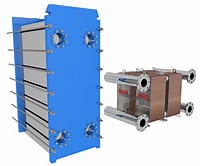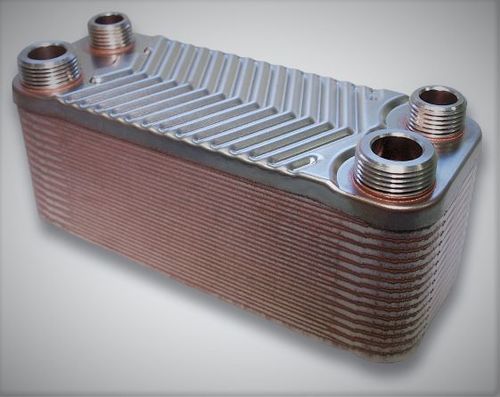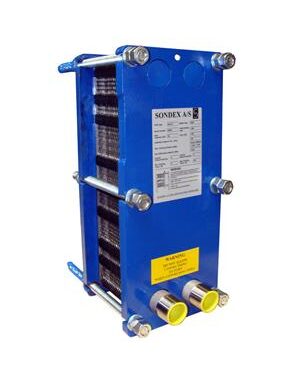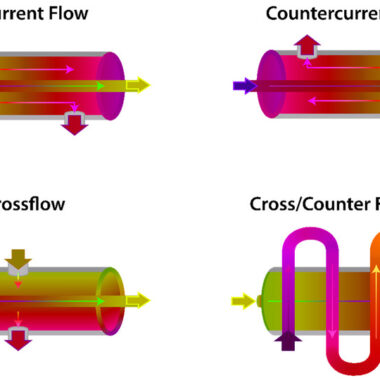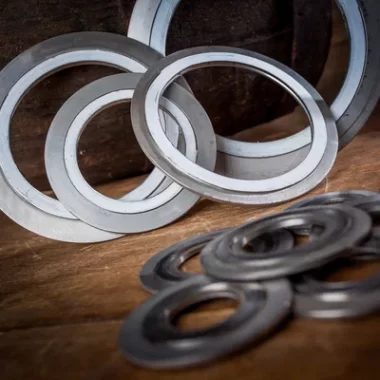Brazed vs Gasketed Heat Exchangers
Brazed vs Gasketed Heat Exchangers
Brazed and gasketed heat exchangers are two common sorts of heat exchangers utilized in different industrial applications. Here’s a comparative analysis of their key characteristics of Brazed vs Gasketed Heat Exchangers :
1) Development:
Brazed Heat Exchangers:
- Brazed heat exchangers (BHEs) comprise of corrugated metal plates that are brazed together employing a high-temperature process. This comes about in a compact and solid unit with no gaskets.
Gasketed Heat Exchangers:
- Gasketed heat exchangers (GHEs) highlight metal plates with gaskets between them, fixed with jolts or clamps. The gaskets make a tight seal between the plates, avoiding fluid leakage.
2) Efficiency:
Brazed Heat Exchangers:
- BHEs ordinarily have higher heat transfer coefficients and are more productive than GHEs. The brazed development permits for way better thermal conductivity between the plates, coming about in made strides heat transfer rates.
Gasketed Heat Exchangers:
- GHEs may have slightly lower heat transfer effectiveness compared to BHEs due to the presence of gaskets, which can obstruct heat transfer and increment thermal resistance.
3) Pressure and Temperature:
Brazed Heat Exchangers:
- BHEs are suitable for high-pressure and high-temperature applications due to their robust development and lack of gaskets. They can withstand aggressive fluids and working conditions.
Gasketed Heat Exchangers:
- GHEs have limitations on pressure and temperature evaluations due to the utilize of gaskets. Higher pressures and temperatures may require special gasket materials or plans.
4) Maintenance:
Brazed Heat Exchangers:
- BHEs are typically maintenance-free, as they don’t have gaskets that can degrade over time. They are planned for long-term operation without the require for gasket replacement.
Gasketed Heat Exchangers:
- GHEs may require occasional maintenance to inspect and replace gaskets, particularly in applications with forceful fluids or high operating temperatures. Gasket replacement can include to support costs and downtime.
5) Cost:
Brazed Heat Exchangers:
- BHEs are generally more costly upfront compared to GHEs due to their higher manufacturing costs and advanced technology. In any case, they offer long-term fetched savings through higher productivity and lower maintenance requirements.
Gasketed Heat Exchangers:
- GHEs are regularly more cost-effective upfront, as they have lower beginning purchase costs. However, progressing support and gasket substitution may result in higher lifetime costs compared to BHEs.
In summary, the choice between brazed and gasketed heat exchangers depends on variables such as productivity necessities, working conditions, maintenance contemplations, and budget constraints. Whereas brazed heat exchangers offer higher proficiency and durability, gasketed heat exchangers may be more cost-effective for certain applications with lower pressure and temperature necessities.
